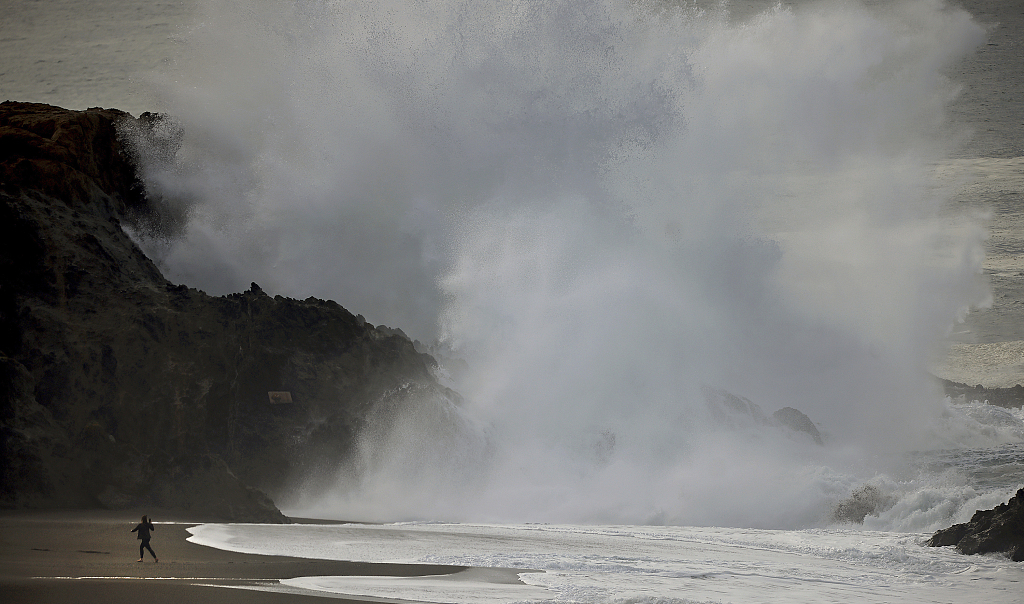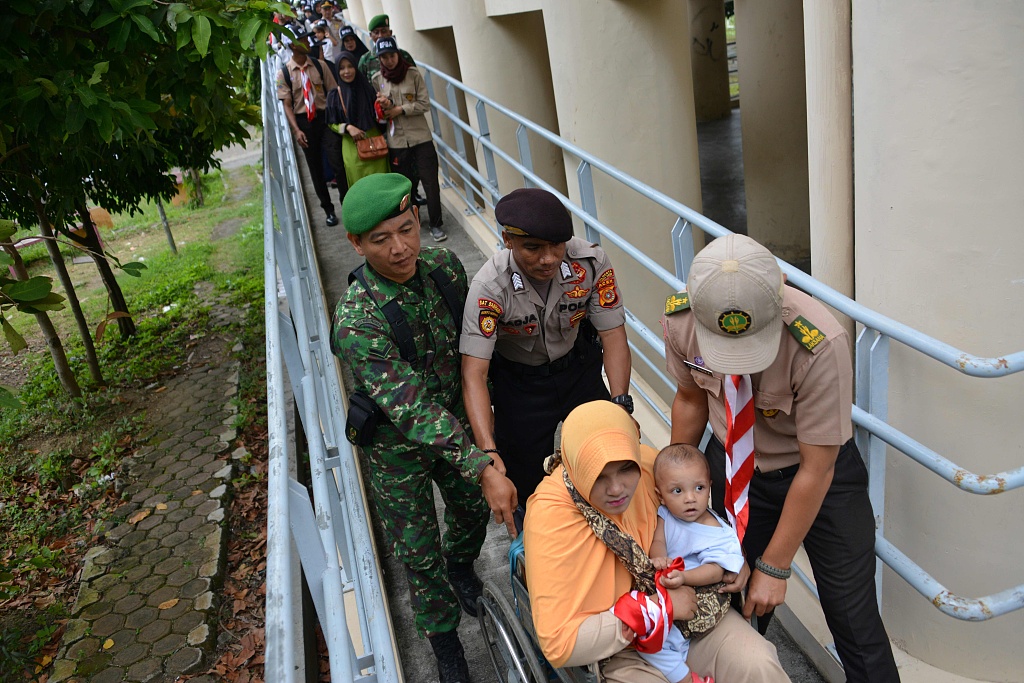World Tsunami Awareness Day, designated on November 5, promotes global awareness of tsunamis and precautions against them.
Tsunamis are one of the most destructive natural disasters. Communities along the coastal areas are most vulnerable to this hazard, with severe casualties and economic losses. How is a tsunami formed and what can people do in advance to protect themselves?

Coupled with a heavy surf and a tsunami advisory for the west coast, large waves crash ashore at Wrights Beach, north of Bodega Bay, California, following a massive undersea volcanic explosion of the Hunga Tonga Hunga Ha'apai volcano in Tonga, January 15, 2022. (Photo: CFP)
Tsunamis are long ocean waves induced by forces that mostly originate from an undersea earthquake, and sometimes by a landslide or volcanic eruption. Unlike wind-caused waves, which are narrowly spaced, there are up to 200 kilometers between each tsunami wave crest. The waves can travel thousands of miles in all directions, from the ocean floor to the surface, moving at more than 800 kilometers per hour.
As a tsunami reaches the shore, it slows down due to geological features, such as bays, reefs, and undersea formations. Most of wave crests are no more than three meters in height, but they contain enormous energy, extending inland by 300 meters or more. They demolish buildings, flip vehicles and cause deadly accidents.

Two weeks after the Indian Ocean tsunami, two Indonesian refugees walk down a road covered with debris leftover from the tsunami disaster in the west coast town of Leupung, about 30 kms from Banda Aceh, January 09, 2005. (Photo: CFP)
About 58 tsunamis have taken more than 260,000 lives in the past 100 years. The highest number of fatalities during that time period took place in December 2004 when the Indian Ocean tsunami occurred. Indonesia, Sri Lanka, India and Thailand were hit the hardest.
Although tsunamis are devastating, their arrivals are predictable and measures can be taken earlier to prevent losses.

Schoolchildren use their schoolbags to protect themselves during a tsunami drill in Tanjung Benoa near Denpasar on the resort island of Bali, August 15, 2017. (Photo: CFP)
Tsunamis are especially common in areas near the Pacific Ocean, or "Ring of Fire," where earthquakes always happen. Thanks to the Pacific Tsunami Warning and Mitigation System (TWS), it will detect and locate earthquakes in its service area and discover if they have generated tsunamis. Later the timely information will be sent to the authorities, such as National Tsunami Warning Centers or Disaster Management Officers. They will alert their coastal residents to prepare for the tsunamis.

A woman and her baby in a wheelchair are given assistance as they evacuate a building during an earthquake and tsunami drill in Banda Aceh, Indonesia, November 26, 2019. (Photo: CFP)
The United Nations Development Programme (UNDP) worked with 90 schools to "assess their tsunami risks, design emergency procedures and evacuation plans" in 2017. More than 170,000 students and teachers have participated in the tsunami safety drills in 380 coastal community schools in 24 countries since then, according to UNDP.
"In the face of such devastation, early warning and early action remain our most effective tools for protecting people from tsunamis. No one should be left behind when a tsunami strikes," said Mami Mizutori, the Special Representative of the Secretary-General for Disaster Risk Reduction, on November 3.


